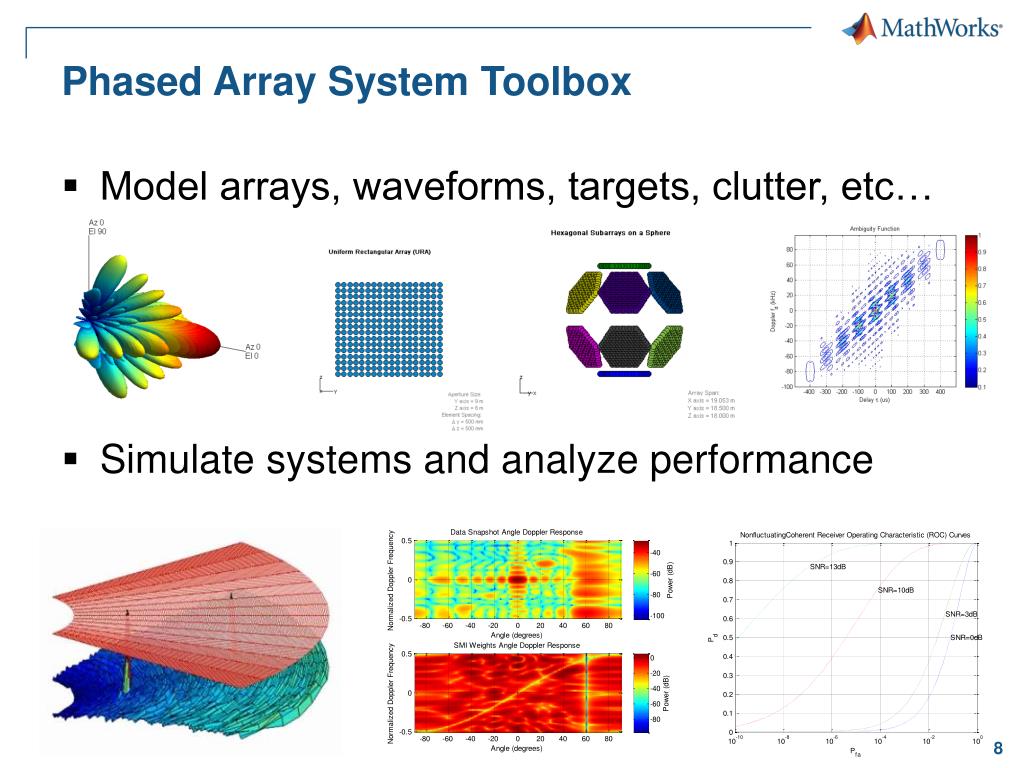


I have generated the design for a 64-element uniform rectangular array (URA) using the Sensor Array Analyzer app in Phased Array System Toolbox. Shown is the 3D directivity pattern for this array steered in azimuth and elevation. As the parameters are adjusted, the 2D and 3D patterns can be evaluated across the range of desired steering and angles and frequencies.ġ. In the first path, you iterate on the array parameters, such as element type, element spacing and location, weighting, and the subarray architecture. The antenna-array design for a MIMO system usually takes one of two paths. Modeling and simulation of antenna arrays can be used in your 5G, radar, and electronic-warfare (EW) workflows to reduce risk and hopefully eliminate rework. With this background in place, I will now focus on each section of the system design, starting with the antenna element and the array. I also demonstrated how hybrid beamforming can be used to simplify a hardware design, but still maintain the desired system performance. This paper documents the theory used in the toolbox.In my previous blogs ( here, here, and here), I showed how beamforming can be used both to improve signal-to-noise ratio (SNR) and achieve higher channel capacity in multiple-input, multiple-output (MIMO) systems. A Matlab toolbox has been developed to enable rapid definition and analysis of 2D and 3D antenna arrays, comprising array elements such as dipole, microstrip patch, helix or any user defined element pattern function. Using simple mathematical models for the element radiation patterns, combined geometrically in the far field, the performance of large arrays can be calculated with reasonable accuracy for significantly less computational effort. As the number of elements in the antenna array increases, its radiated characteristics tend to be dominated by the geometric layout and excitation of the component elements, rather than the elements themselves.

However, despite the increases in computer power, array antennas can be electrically very large and therefore still represent a significant analysis problem. Of particular prevalence are full wave microwave solvers, used to obtain the current densities on and thereby radiated fields for arbitrary structures. In recent years the advances in computer technology has led to increasing use of numerical techniques in the design and development of antennas and related technology. Paper Titled : Phased Array Design Toolbox for MATLAB Theory of Operation This is the abstract from my paper, included as documentation, in the zip file.


 0 kommentar(er)
0 kommentar(er)
